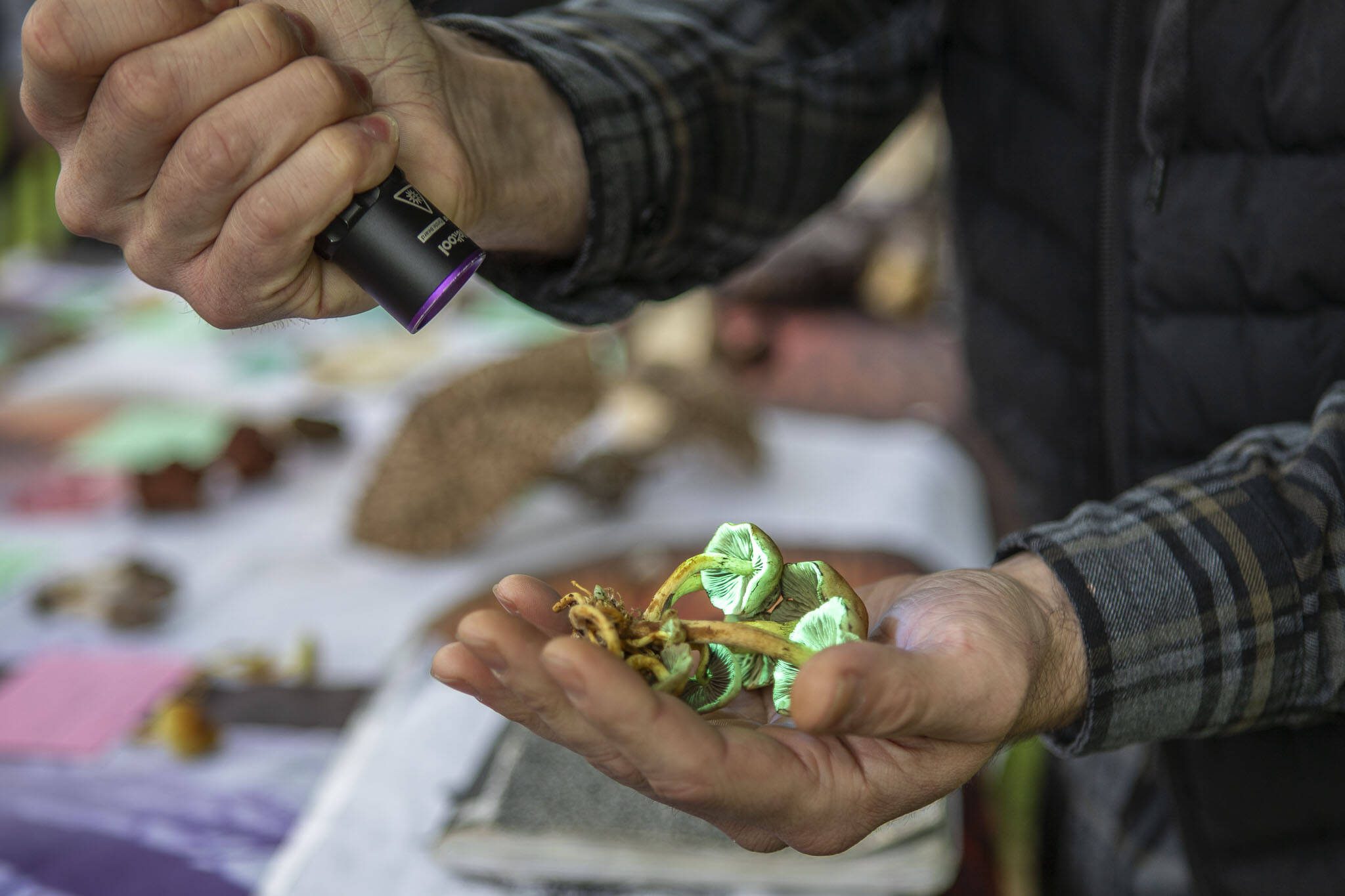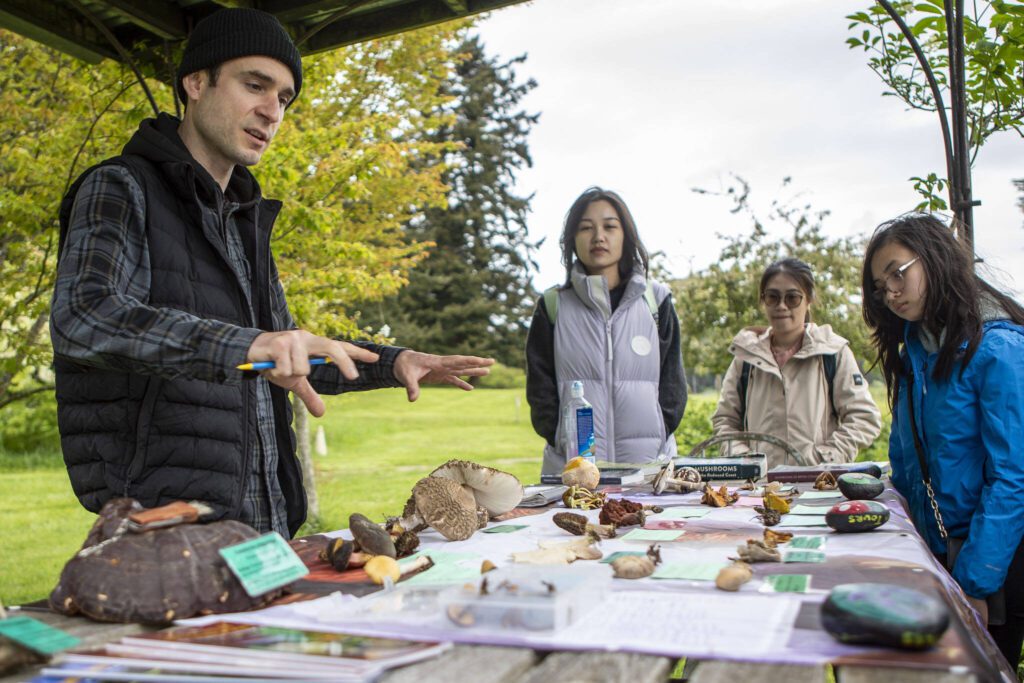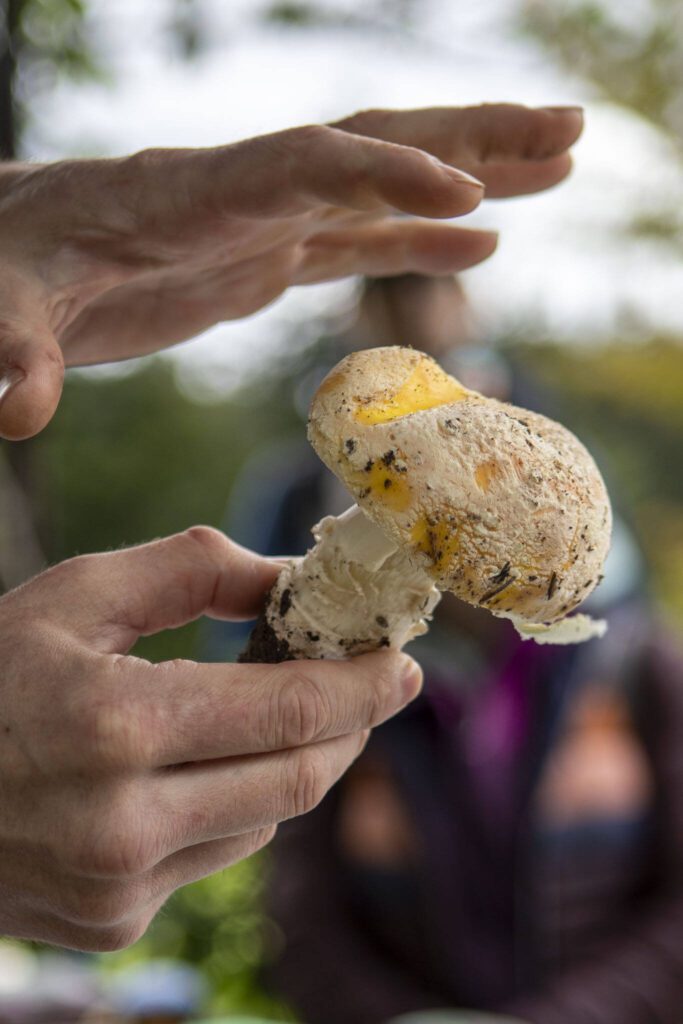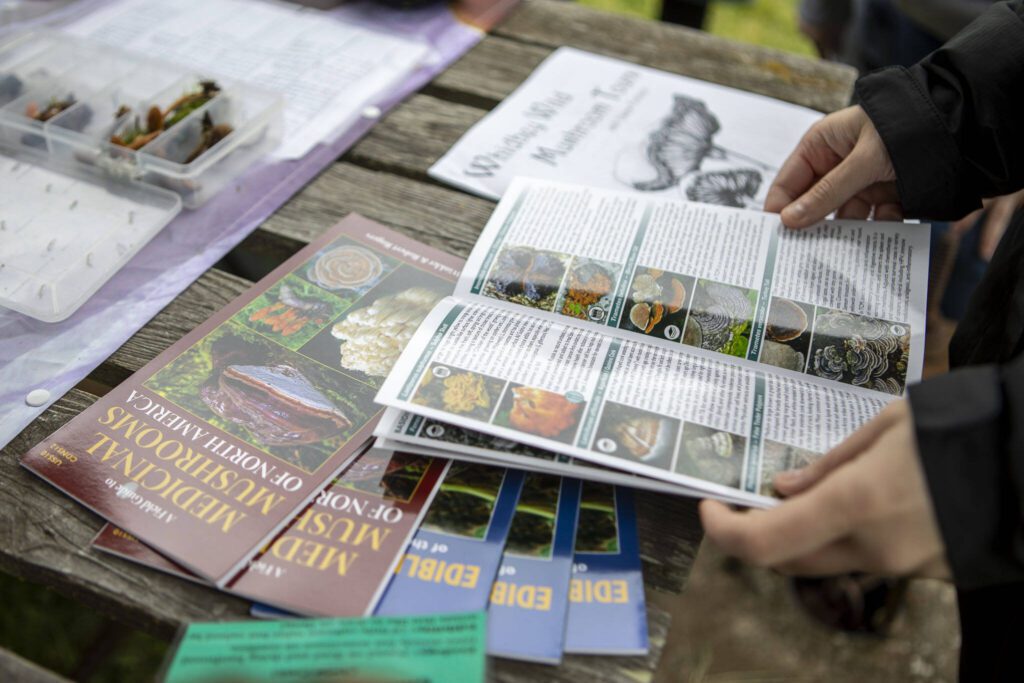LANGLEY — On a Whidbey Wild Mushroom Tour, attendees may get a chance to take home local fungi. But that’s not the focus of the experience, said tour lead Travis Furlanic.
“Harvesting is totally circumstantial,” he said. “My priority is education.”
About six years ago, Furlanic started guiding groups in south Whidbey Island parks to change people’s perspectives on foraging. People can “put mushrooms in their baskets more often than they think,” he said.
On Saturdays during the spring and fall, he leads three-hour public tours for groups of 10 to 13 people. He spends the first hour offering tips on how to identify local mushrooms and the remaining time on a local trail, pointing out species in their natural environments.
Nine people gathered around a display table at 9 a.m. on April 27 at South Whidbey Tilth Farmers Market. The night before, Furlanic had spent seven hours foraging for an array of mushrooms to showcase during the tours.
Mushrooms with green index cards next to them were either edible or likely non-toxic species. Those marked with red index cards were toxic or likely toxic.
Under a UV flashlight, Furlanic held up a small collection of sulphur tuft, so visitors could see the mushroom’s gills glow.
He also passed around a phylloporus arenicola , whose cap looks like a black and brown stone from above. Underneath, the mushroom reveals bright yellow gills that turn blue when scraped.
Other mushrooms have tiny teeth-like features hidden underneath their caps, he pointed out.
“You really have to look closely to appreciate them,” Furlanic said during his initial presentation.
Brittany Ater, of Seattle, asked him about the ethics of foraging mushrooms.
It depends on the species, Furlanic said, as some mushrooms like turkey tail — or Coriolus versicolor — are slow growing and take one to two months to mature.
In general, he advises foragers to only take the mushrooms they need for food or medicinal purposes.
After his presentation, Furlanic asks group members to drive to a park he has already surveyed for mushroom abundance. The location of the tour changes nearly every time, he said.
“It’s not like plants,” he said. “They’re always moving around.”
On April 27, attendees met him at Saratoga Woods County Park, where a dense canopy of Douglas firs and western hemlocks shaded a cloudy grey sky.
Several yards into the forest, Furlanic identified a fallen tree where turkey tail was growing. He removed two pieces of the disk-shaped fungus to pass around the group and encouraged a group member to take them home.
Visually, the mushroom resembles the animal it is named after, with alternating brown and tan colors. Soft to the touch, turkey tail also has an earthy smell, visitors noted.
Furlanic spotted a patch of mica caps a few yards farther down the trail. The ombre caps start to curl at the edges as the mushroom grows older, he said.
The walking portion of the tour usually lasts about two hours, though sometimes it is longer, depending on what he and other members of the group are finding.
This spring, Furlanic is leading public tours every Saturday through June 15. Attendees can choose between a morning tour starting at 9 a.m. or an afternoon tour at 1 p.m.
Furlanic said he will likely post fall tour dates in August.
He also offers private tours year round for locals who want to identify mushrooms in a park on the north or south side of the island, or learn what fungi are growing on their property.
Tours cost $50 a person.
To book a tour, guests can go to Furlanic’s website Whidbey Wild Mushroom Tours.
Ta’Leah Van Sistine: 425-339-3460; taleah.vansistine@heraldnet.com; Twitter: @TaLeahRoseV.
Talk to us
> Give us your news tips.
> Send us a letter to the editor.
> More Herald contact information.






























